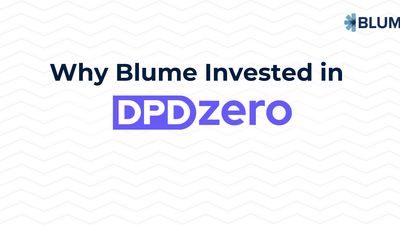Throughout history, there have been decades when nothing happened and months when decades happened. Something like that has happened in the past 30 months. The digital economy has altered dramatically, with "India's trillion-dollar digital opportunity" report stating the industry is poised to grow to $1 Tn this decade. The fintech industry, set to grow to $150 Bn by 2025, has considerably impacted various economic equations, addressing critical customer pain points across multiple geographies.
On the B2C side, not a single vertical under Financial Services (we look at Fintech / Financial Services as Horizontals) caters to more than a fourth of India’s relevant TG. Due to the size of the opportunity and primarily due to insufficient penetration strategies of incumbents and their limited product offerings, fintech companies like Slice, Jai Kisan, and Kaliedofin found success by simplifying one or more aspects of the economic equation that are crucial for their TGs. This is Phase 2 of India Fintech, with Phase 1 being the payments and credit businesses that started between 2015 and 2020. While these companies start by facilitating payments, they eventually move into adjacent areas to gain a deeper share of their customer's wallets. Lending is an obvious adjacency, and many of them spend most of their efforts to add lending to their products. This is true for marketplaces too, which eventually add lending as a proposition, as explained in our earlier note with respect to our Rooftop Solar investment - Aerem. BNPL is another business activity that is considered and debated in boardrooms to gain a higher share of wallets.
Neo Banks and BNPL are getting rapidly adopted in India because users are dissatisfied with conventional credit solutions. For instance, large segments of the Indian population aren’t offered any credit by existing financial institutions, resulting in a pressing consumer need to access new types of financial services. We are yet to see Fintechs cater holistically (& successfully) to the three parts of the economic equation - Consumption, Savings, and Investments. There are a few startups that do cater to one (or maybe two) of the three parts of the economic equation. Still, I see only a few companies able to take a strategic view of the financial equation and enable consumers to plan their financial well-being using Savings and Investment instruments in a structured manner with consumer empathy at the core. On many occasions, the orientation of B2C businesses quickly comes down to CAC and fueling repeat purchase/engagement as against customer centricity and empathetic approach to customers’ financial journeys.
Today, 692 million Indian users are already online. With this number increasing to 900 million by 2025, it paves the way for customer experience-centric solutions to proliferate. In addition, by creating instant credit for consumers, BNPL applications and platforms have revealed the spending patterns of Indians otherwise invisible to the consumer.
Credit availability has increased dramatically throughout India, reaching an all-time high and growing nearly 40% year over year, creating a perception that youth are seeking instant gratification through the use of credit / BNPL solutions. The philosophical decision to invest in Multipl was not as much against credit / BNPL as it was to support the creation of a ground-up and credible alternative for youth to plan their SPENDS, SAVE, and INVEST as needed. In fact, the young (and old alike) stand to benefit from keeping both alternatives and using BNPL judiciously when a Savings / Plan linked spending approach is not practical..
Why Multipl?
Multipl allows you to save for your future purchase. It is one of the first Save Now Buy Later (SNBL) products, a completely new category creator fulfilling an important and accepted need that today millions of housewives pursue by storing the households surplus in the grain box, which is neither structured nor yields any returns.
A survey by EY shows that over 80% of Indians are saving more money now than ever before, and half of them have already set a goal to save money rather than spend it due to uncertainty about how to manage growing living expenses. A large segment of consumers is now choosing to save than take on debt for large purchases they want to indulge in. Currently, a significant part of the hard-earned money consumers set aside in their savings accounts earns only 3-4% interest, which translates to merely 2-3% per year after tax. Besides, there are no accessible avenues for people to plan their spending and link savings and/or investments with spending.
Typically, more than 50% of your spending is, on average, on expenses of a planned nature for middle-class families. For strata below that, this percentage of planned spending only gets higher. And that still leaves a lot of needs to be fulfilled because today, households look at their cash balance (or bank balance) but not borrowing capacity and make the spending decisions. Many times, the fact that an opportunity to borrow exists, there may be a tendency to spend/buy (a more expensive phone than one would have otherwise purchased).
As we were looking for opportunities in this segment, we met Multipl, which is addressing customers' latent need to plan their spending more efficiently while driving long-term customer behavior of the young generation towards saving/investing.
Multipl's SNBL strategy is focused on planned spending and seeks to instill a favorable habit centered on money management. Therefore, a critical component is planning, using short- and long-term objectives to develop a saving habit rather than simply placing money in an account and forgetting about it.
SNBL is similar to BNPL in helping retailers minimize shopping cart abandonment. However, with BNPL, consumers are offered a frictionless credit option. However, SNBL guides them through a journey to build and sustain positive customer relationships as they save up for the product.
In preparation for a goal, particularly scheduled expenditures, users continue the practice of saving money while Multipl adds a structured framework and scale around it. Furthermore, the strategy ensures that good habits are generally associated with savings and incentives.
From a financial standpoint, savings immediately brings out images of traditional savings products such as fixed deposits, bank accounts, mutual funds, and SIP. But for short-term purchases, even 5% cashback can be better than 20% pa interest if the SIP is just for six months.
Imagine picking a product from Multipl’s merchant partners and saving towards it until you finally buy it. Your debt-free purchase can be made by adding money over time and using the money to purchase what you want.
Today Multipl works with brands like Croma, MakemyTrip, LivSpace, Pickyourtrail, Edureka, Ather, Urban Ladder, Bounce, Garmin, HomeCenter, Kalyan Jeweller, Wakefit, Yatra, Maple, and others.
BNPL x SNBL: The Perfect Balance
Decreasing payments without incurring interest and dividing them into smaller amounts seems highly appealing. Using this, consumers often do the "buy now, pay later" strategy to make unaffordable purchases. Small amounts can deceive people into spending more than they should. However, consumers should read the small print before relying on a BNPL to fund their aspirational purchases.
Here is a breakdown of where people utilize BNPL and a case where the SNBL & BNPL can co-exist.
Travel
Pent-up demand in the travel and tourism industry has led to many Indian visitors choosing BNPL to finance their international vacation plans. Travel BNPL presently makes up barely 1% of travel agencies' gross merchandise value (GMV), but by the end of the following year, it is anticipated that this percentage will rise to 5%. This spending, on average, can be in the range of INR 1 Lakh to INR 1.5 Lakh. That's where we believe SNBL can come in and get the wallet share making users make more conscious decisions.
Food
The National Restaurant Association of India (NRAI) released a study for 2018–19 that emphasizes a new group of millennials unintentionally accelerating the food industry.
They are urban working professionals between the ages of 25 and 35 who everyday struggle with the stress of city living and being apart from their families. The dangers of the epidemic in the last two to three years only served to make this worse. According to NRAI research, on average, people in this group spend Rs 2,746 per month on takeout or dining out. They also dine roughly 6.6 times each month due to the speed of life.
It may help explain why food-related partners account for roughly 38% of most BNPL applications.
Saving the day with SNBL
SNBL encourages customers to save for anticipated costs, like a January wedding anniversary, a May holiday, or a new household item in November. So along with the brand discounts and better market returns in the case of Multipl, users won't go into debt and can spend their money on necessities instead of impulsive purchases.
BNPL can come for smaller ticket-size items, like food or clothes, but significant purchases should always be thought of with savings in mind. As an added benefit, SNBL savings have a significantly higher magnitude due to the rewards that come with it.
A Game Changer for Merchants
Currently, merchants can capture consumers with a high level of wealth or feel comfortable borrowing money to purchase aspirational items. But, in reality, they miss out on a large segment of customers who want to buy the product but want to save up first. The Multipl platform will allow merchants to return these cautious customers to the sales funnel.
Regarding customer data, merchants cannot access consumer information when paying with a credit card. Still, the SNBL model can analyze consumer behavior and activity, allowing them to better cater to their needs. This enables merchant partners to profit from knowledge about consumer behavior. Retailers can also utilize these revelations to organize their supply networks and carry out inventory choices.
Choosing Multipl was also made easy because of the seasoned founding team of Jags, Paddy, and Vikas. They are seasoned entrepreneurs, second-time founders, and a well-rounded team with complementing skill sets across investment product design, marketing, and tech. They understand the start-up journey and the importance of scaling businesses with positive unit economics.
Besides, it fits our need for a platform that owns the customer and the customer experience throughout the fulfillment process. From a brand's perspective, the sophisticated features of Multipl allow businesses to build long-term relationships with their customers before buying products. Additionally, a consumer who has been saving for months to purchase products and services is always a positive sign of engagement.
Multipl's long-term goal is to encourage consumers to save money, at least for big-ticket purchases, and steer them towards financial instruments that yield better results without piling on debt.






